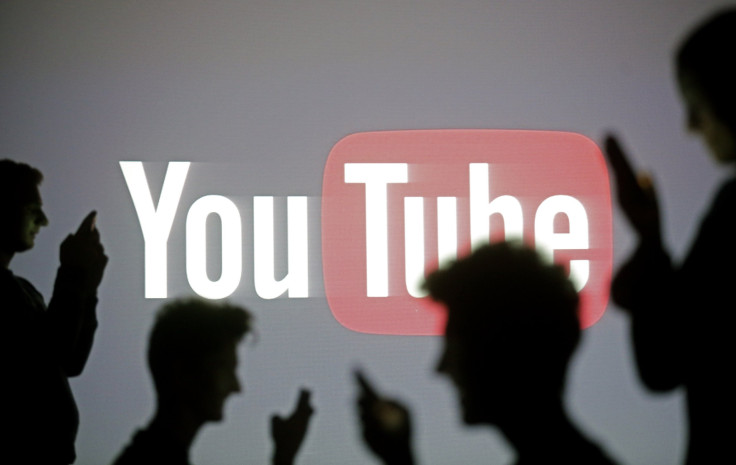How Blockchain Innovations Are Creating New Ways to Monetize Vlogging

Vlogging has created a whole generation of new on-screen stars. Mentioning names like Logan Paul or PewDiePie may invoke bewildered stares from those in the older generation, but they have made millions of dollars from their YouTube videos.
These success stories lead many to think that starting their own YouTube channel is an easy way to a healthy income. Unfortunately, the reality is somewhat harsher.
How YouTubers Get Rich – Or Not
Ad Revenue
Top-ranking YouTube stars make their money in a few different ways. Firstly, through ad revenue paid by YouTube. The platform uses the ad publishing service of its parent company, Google. For a top YouTuber like Logan Paul with over 18 million followers, this can translate to a very healthy income.
However, given that every 1,000 YouTube video views translate to around $1 in advertising income, those YouTubers in the top 3 who boast multiple six-figure followings are barely breaking the poverty line.
Even if a creator spends significant time and money producing the highest-quality content, there is no other way for them to recoup these costs on YouTube without having a massive following to consume high volumes of video advertisements.
For this reason, one of the most often repeated pieces of advice for new YouTubers is to post new videos with consistent frequency — daily if possible. This helps to get more content out there, which helps to get more eyes on ads, which pushes up revenue.
Of course, this approach pushes down the quality of videos, but that’s neither here nor there on a platform that churns out a staggering 300 hours of new video per minute.
Visibility on YouTube is also dependent on algorithms. Even a creator producing vast quantities of new content each week may find the algorithm is effectively censoring their content, meaning videos don’t get seen even by the followers of the account. Therefore, the algorithms also have the power to make or break ad revenues for a vlogger.
Sponsorships
Ad revenue is not the only method of monetization though. Despite the fact that YouTube barely breaks even, it is recognized as one of the ultimate means of popularizing goods and services.
Marketers are increasingly turning to online influencers to help promote brands to social media audiences. The medium of video is no exception, and hence marketers are willing to pay for product or brand placements in a video or a mention as a channel sponsor.
However, finding sponsors can be a challenge, particularly for smaller channels which may not yet have an audience big enough to make them eligible for becoming sought-after by marketers.
Some platforms exist to foster these kinds of connections; however they invariably charge a fee to both creators and marketers for accessing their databases. Without using a connection service, a creator has no option other than to try and pitch marketing departments directly, which can be a daunting and ultimately fruitless task.
YouTube itself doesn’t provide any kind of direct messaging service so even if a brand manages to find a channel they want to work with, they have to connect via another medium like Twitter to actually establish a relationship.
All of these challenges are an inevitable result of the fact that YouTube dominates the video-sharing industry. However, this may soon change.
Emerging tech companies are now starting to recognize the potential for blockchain to disrupt the market for video platforms. Some are now releasing innovative solutions that could prove highly attractive to the next generation of vloggers looking to monetize their video efforts.
Blockchain Solutions for Vloggers
AQER is developing a platform that will connect vloggers and brands wishing to work with them, using artificial intelligence (AI) and blockchain.
The AQER platform uses open API’s to collect data like subscribers, views or type of content from video content platforms such as YouTube and Instagram. This data is then scanned by AI algorithms to produce a ranking for vloggers. Brands can then browse through vloggers registered on the platform to find someone who fits their requirements.
Once they find a suitable fit and the brand and vlogger agree to work together, blockchain-based smart contracts take over to govern the transaction itself. Payments are transferred using digital wallets, and the smart contracts are also designed to handle aspects such as lock-up periods, entertainment rights, and identification.
Using blockchain to manage the payment process removes many headaches for both brands and creators. Influencer sponsorship payments currently rely primarily on trust — the brand must trust that the creator will deliver, and the creator must trust that the brand will pay. Smart contracts have the functionality to hold payments in escrow, significantly reducing the risk that either party will fail to deliver their side of the deal.
D-Tube offers another blockchain-based monetization solution for vloggers. It’s built on the Steem blockchain and operates similarly to content-sharing service Steemit.
On D-Tube, vloggers can earn Steem tokens from sharing their content, and viewers can collect tokens by curating videos shared on the platform, voting them up or down. This curation functionality ensures that popular videos stand a better chance of becoming visible, meaning that vloggers are not at the mercy of opaque algorithms to earn their income.
The Future of the Vlogging Industry
Blockchain solutions offer promising alternatives to monetizing vloggers' content versus today’s environment.
Whether a new vlogger is looking to maximize their chances of obtaining a brand sponsorship or bypass the YouTube algorithms, the next generation of video stars now has a new generation of tools available to monetize their content.






